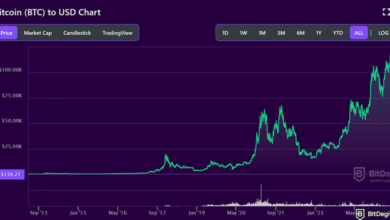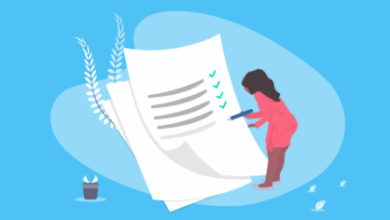How Much Does it Cost to Open a Boba Shop in the United States?

Curious about how much does it cost to open a boba shop? You’re in the right place! Bubble tea has taken the U.S. by storm with its unique flavors and eye-catching appeal. But before you dive in, it’s essential to understand financial investment.
This guide covers the key costs of running a boba shop, including equipment, ingredients, rent, and licenses, to help you budget wisely. Whether you’re a milk tea fan or love experimenting with flavors, understanding expenses, and profits is the first step to success. Let’s get started!
Importance of Understanding Startup Costs Before Launching
Knowing your startup costs before launching your boba shop is like having a roadmap—it keeps you from getting lost. Without a clear budget, you might run into unexpected financial hurdles. Having a solid understanding of your expenses helps you plan better, avoid cash flow issues, and make smarter business decisions. Many new entrepreneurs underestimate costs, which can lead to financial strain soon after opening.
A well-prepared budget also makes you more credible to investors and lenders. When they see you’ve done your homework, they’ll have more confidence in your vision. Plus, understanding your costs helps you prioritize spending—ensuring essentials are covered while still leaving room for marketing and future growth.
See also: Seth Dillon Net Worth: The Wealth of Seth Dillon and His Business Ventures
Estimated Total Investment
Starting a Boba Shop franchise requires a significant investment. Your costs will depend on factors like store size, location, and equipment. Here’s what you need to know:
- Franchise Fee – $20,000 to $50,000
This fee gives you the right to operate under the brand name, receive initial training, and get ongoing support.
- Minimum Cash Requirement – $100,000
You’ll need at least this amount in liquid capital (readily available funds) to cover early operating costs and any unexpected expenses.
- Total Investment – Starts at $150,000 to $300,000
This includes:
- Store Setup – Renting a location and making necessary renovations.
- Equipment & Supplies – Buying tea brewing machines, refrigerators, and a POS system.
- Inventory – Stocking up on high-quality ingredients and packaging materials.
- Permits & Licenses – Securing legal approval to operate.
- Marketing & Advertising – Promoting your grand opening and attracting customers.
Costs can vary based on location and store size. Urban areas usually have higher rent and renovation costs, while larger stores need more equipment and inventory.
Key Cost Factors to Consider When Opening a Boba Shop in the United States?
When opening a boba shop, knowing the main cost factors is important for effective budgeting and long-term success.
Key Factor #1: Location & Rent
Finding the perfect spot for your boba shop is a big deal. A busy street or shopping mall can bring in tons of foot traffic, but the rent will likely be higher. Think about who’s in the area—college students, office workers, or families.
Different crowds have different tastes, so knowing your customers helps you shape your menu and pricing. If you can, go for a place with outdoor seating—it makes the experience more enjoyable and can boost sales, especially in warm weather. The trick is to find a location that’s visible and inviting without draining your budget.
Key Factor #2: Equipment & Setup
Having the right equipment is essential for making quality drinks efficiently. You’ll need blenders, sealing machines, tea brewers, and refrigeration to keep everything fresh and running smoothly.
- Quality matters: Commercial-grade equipment may cost more upfront, but it lasts longer and performs better.
- Beyond machines: Setup costs also include furniture, décor, and signage to create a welcoming atmosphere.
- Installation expenses: Depending on your space, you may need plumbing and electrical work to accommodate your equipment.
Researching suppliers and comparing prices will help you find the best deals without compromising on quality.
Key Factor #3: Inventory & Ingredients
Stocking up on high-quality ingredients is essential for a great boba shop. Key ingredients include:
- Tapioca pearls (or other toppings like popping boba and jelly)
- Tea leaves (black, green, oolong, etc.)
- Sweeteners (sugar, syrups, honey)
- Milk and dairy alternatives (for milk teas)
- Flavorings (fruit purees, powders, and extracts)
Prices vary based on supplier and quality, so building relationships with wholesalers can help reduce costs over time. Also, consider seasonal ingredients and trends to keep your menu fresh and exciting.
Storage is key—fresh ingredients require refrigeration and proper handling to maintain quality. Balancing variety and cost is essential to avoid waste while keeping your customers happy.
Key Factor #4: Licensing & Permits
Getting the right licenses and permits is a must when opening a boba shop. Each state and city has different rules, so it’s important to check your local requirements.
Here’s what you’ll typically need:
- Business License – This allows you to operate legally and register your shop’s name.
- Health Permits – Ensures that your shop meets food safety standards.
- Seller’s Permit – Required if you plan to sell taxable goods.
- Signage & Outdoor Seating Permits – Some cities regulate store signs and patio seating.
- Zoning Permits – These determine where businesses like yours can be located.
Consult a local small business office or legal expert to avoid fines or closure by ensuring proper setup.
Key Factor #5: Staffing Costs
Hiring the right team is essential for running a smooth operation, but it comes with costs.
Key expenses include:
- Employee wages – Pay rates vary based on experience and location.
- Training costs – New staff need time to learn how to prepare drinks and provide great service.
- Employee benefits – Health insurance, paid time off, and other perks can help attract top talent.
- Seasonal staffing – Busy times (like summer) may require extra employees, while slower months might mean fewer shifts.
Planning for staffing costs ensures your business runs efficiently without unexpected expenses catching you off guard.
Key Factor #6: Marketing & Branding
Good branding and marketing set your boba shop apart from competitors. Start by creating a strong brand identity—choose a catchy name, a unique logo, and colors that reflect your shop’s vibe.
Marketing strategies to consider:
- Social media – Platforms like Instagram and TikTok are great for showcasing drinks and engaging with customers.
- Local partnerships – Collaborate with nearby businesses or influencers to expand your reach.
- Traditional marketing – Flyers, posters, and participating in community events can help spread the word.
- Customer engagement – Collect feedback to improve your products and services.
A well-planned marketing approach helps attract customers and builds long-term brand loyalty in a competitive market.
Conclusion
Opening a boba shop in the U.S. is an exciting opportunity, but it requires careful financial planning. From franchise fees and equipment to rent and marketing, startup costs can range from $150,000 to $300,000 or more, depending on your location and store size.
By understanding these costs upfront, you can create a solid budget, avoid unexpected financial setbacks, and position your shop for success. Choosing the right location, investing in quality ingredients, hiring skilled staff, and building a strong brand will all contribute to long-term profitability.
With good planning, your boba shop can grow into a successful business, serving tasty drinks and gaining loyal customers. Ready to get started? Begin today, and you’ll be making your boba dreams come true!




